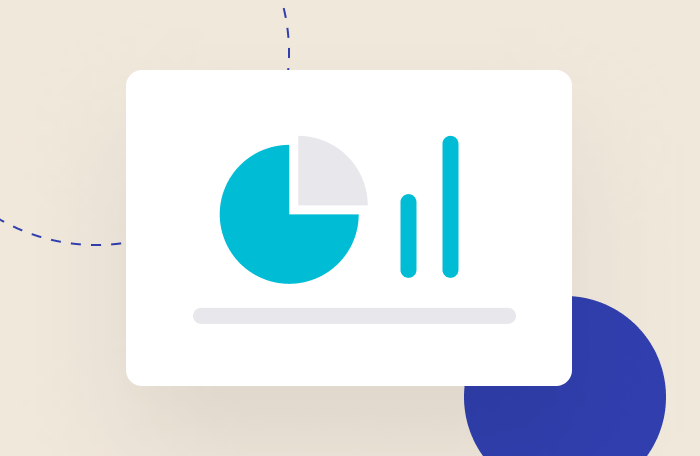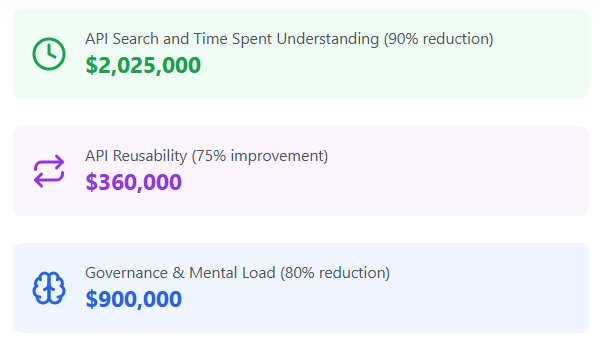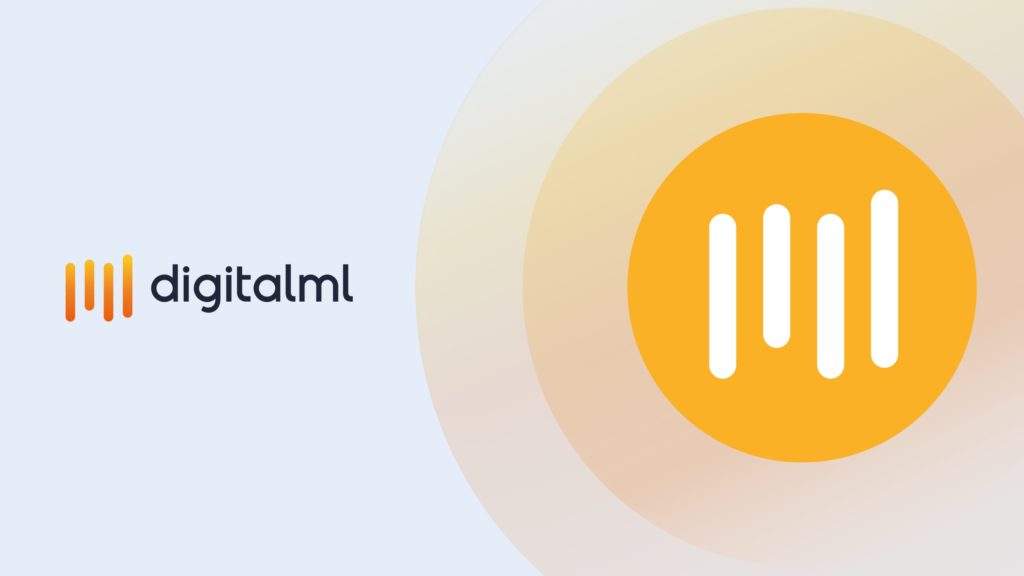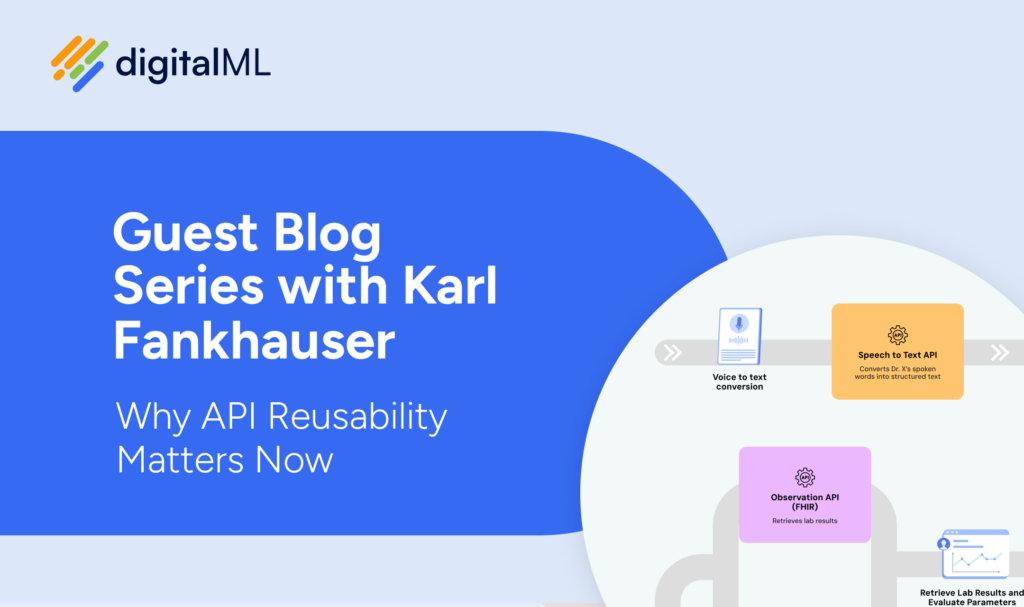Mastering Your API Landscape: Comparing the API Catalog, API Portal, and Developer Marketplace
In today’s API-centric world, enterprises are increasingly managing a large inventory of APIs across multi-cloud and heterogenous environments. The maturation of API-first strategies means priorities are now shifting towards streamlined management of these complex ecosystems to drive successful API adoption and reuse, while saving time, cost, and resources where possible.
Embracing this mature approach means integrating best-of-breed architectural components that deliver the promises of API first (e.g. increased innovation, collaboration, and speed to market). This includes three key components: the API catalog, the API portal, and the developer marketplace. These terms are often used interchangeably, but they are distinct tools that support separate parts of the API management and adoption story.
The API Catalog: Your Distribution Warehouse for APIs
An API catalog serves as the centralized repository for an enterprise’s entire API inventory across all lifecycle states and runtimes. It is where APIs are captured, managed, governed, curated, and promoted from. Think of it as a distribution warehouse as part of a robust supply chain for your APIs where you store, organize, and keep tabs on them to track how they’re performing.
In large enterprises, your API and integration repository will likely contain hundreds to thousands of services in varying formats and types such as Swagger 2.0, OpenAPI Specification (OAS) 3, Async API, GraphQL, and legacy SOAP. These will be a mix of North-South and East-West APIs, running across different platforms, and in different lifecycle and quality states. All supporting different consumer patterns with varying levels of complexity.
The API catalog is primarily utilized by a small core API team, tasked with enabling a wider audience within the API ecosystem to leverage these APIs effectively.
Best Practices for API Catalogs
Some common practices for the best API catalogs include:
- Ensure the API catalog is abstracted and vendor agnostic. You want the catalog to contain your entire API inventory, regardless of where it’s running or which implementation it’s coded to, and in a flexible and portable way.
- Connect the catalog to SCM repos. A further measure to ensure you’re building a complete picture; so that you can capture APIs being developed under the radar of any top-down API tools.
- Connect the catalog to the rest of your existing API architecture. So that all of your API metrics are in one place and you can make business decisions on your portfolio.
- Keep all your connections alive and active. It’s important to remember the catalog is not a once- and done process. Your integrations to other ecosystem apps like those mentioned above can help ensure your catalog is always up to date.
- Build in democratized governance by default. Where APIs can be aligned to their appropriate level of standards, policies, and security based on their use case.
- Leverage the catalog as the central location for curating APIs for reuse; surrounding them with consumer-centric metadata and artifacts. The API catalog must address the diverse needs of your consumers who also interact with these APIs through the portal and marketplace.
- Make sure your catalog is properly organized and rationalized. Business and technical capability models as well as robust versioning strategy can be used.
- Capture and manage complexity. Enterprise API ecosystems are inherently complex, with lots of versions, relationships and dependencies, and lifecycle implications of multiple consumers using your APIs. All of this should be demystified in the catalog.
The API Portal: Your Tailored API Storefront
An API portal (also known as an API consumer portal) is the interface where API consumers go to discover, evaluate, and onboard the enterprise’s “gold standard” APIs—those that are reusable across multiple applications. Think of it as your digital storefront, enabling consumers to find reusable APIs, decide if they meet their use case, decide if they want to take on the dependency associated with those APIs, get approval, and build a connection with the API producer.
Increasingly, the API portal is used by a diverse and less technical range of personas, such as product owners, security, and support teams.
Best Practices for API Portals
Common practices for best-of-breed API portals include:
- Offer tailored consumption experiences. API portal experiences should be customized for different consumer audiences; from internal to partner and public, business to IT. This is most easily supported by multiple portals.
- Ensure content relevance and granularity. The API contents within the portal should also be relevant to the audience group, as well as providing the appropriate level of granularity. For example, internal consumers will need the most details for your APIs.
- Always keep the content fresh. Maintain a direct connection to the API catalog to ensure that the content in the portal is always current and reflects the most up-to-date API versions, as well as advertising and driving demand for what’s currently in flight.
- Continually improve. Track portal usage and feedback as well as API consumption metrics to iterate on the portal’s offerings, increasing adoption and further bettering the consumer experience.
- Create a connection between the consumer and API owner. The owner has to onboard the consumer to the API, ensuring non-functional requirements (NFRs) and service level agreements (SLAs) reflect increased usage while updating their roadmap plans to iterate the API over time. Consumers may want to influence roadmap or request changes while ideally staying current of version recommendations.
- Don’t forget about the additional complexity here, too. New versions and changes, as well as increased dependencies across multiple API portals must be tracked and managed accordingly.
The relationship between the API Catalog and Portal
The relationship between an API catalog and portal can be likened to that of a distribution warehouse and a storefront with a comprehensive supply chain (delivered by extended API lifecycle management across both). Both components need to manage the complexity arising from multiple API consumers, ensure robust security and governance, and support unified metrics and visibility across design, runtime, and consumption phases.
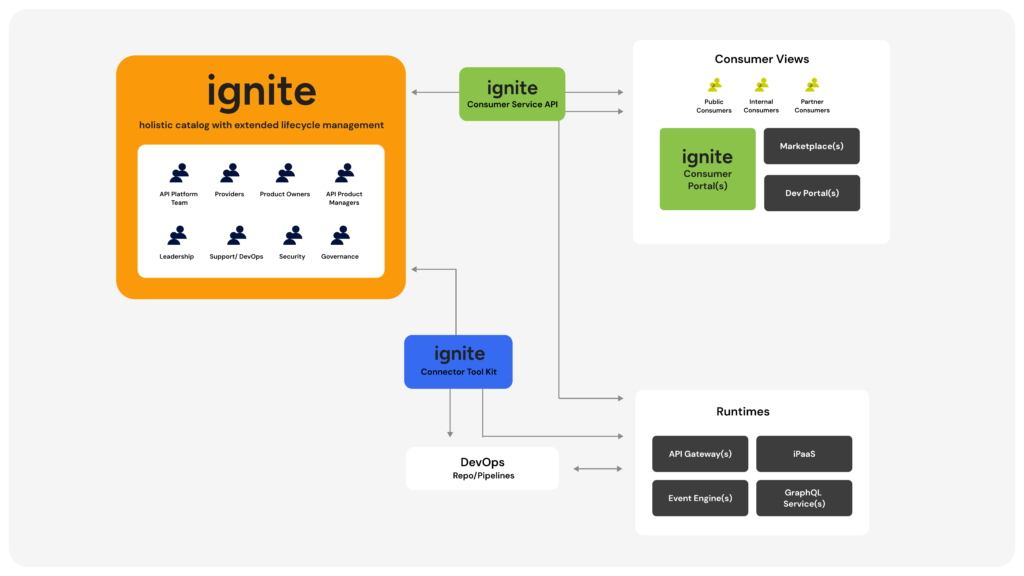
ignite as an example
Our ignite Platform offers a unique approach to the API catalog and portal space. ignite offers a one-of-a-kind gateway and platform-agnostic Holistic Catalog for all your APIs across all lifecycle states and runtimes. Tied to our multiple API Consumer Portals, offering tailored consumption experiences for every persona in your API ecosystem. All kept active with Extended API Lifecycle Management, and integrated to your entire IT landscape for one seamless framework.
We’re passionate about accelerating large enterprises’ API maturity journey, so have designed this offering to incorporate all of the API catalog and portal best practices discussed in this post.
The Developer Marketplace
While somewhat distinct from API catalog and portal, the developer marketplace is another exciting piece of the puzzle that many enterprises are interested in adopting.
It’s the place for developers to find every component and functionality piece they need to build an application – of course including APIs but also other aspects like application environments, infrastructure, database and storage, developer frameworks and pipelines.
The developer marketplace might be a daunting initiative for you right now, especially if you’re not yet a mature dev shop. But getting the API catalog and portal components right can help get you to this goal state faster; many of the best practices for each are relevant to the marketplace space, and of course your marketplace needs top quality API products in there too to help your developers build their applications.
Conclusion
For enterprises, understanding the difference between an API catalog, API portal, and developer marketplace is crucial for delivering on the promises of an API-first strategy and helping you access at each piece of the puzzle. Each component serves a unique role but must work cohesively to ensure your APIs’ are successful.
Differentiate Your Digital Enterprise Now
Learn how it can help your enterprise accelerate digital transformation

